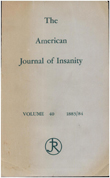Body weight, dieting, and eating disorder symptoms among college students, 1982 to 1992
Abstract
OBJECTIVE: The authors sought to examine changes in prevalence of dieting behavior and eating disorder symptoms from 1982 to 1992. METHOD: In 1982, 625 women and 276 men participated in a study examining body weight, eating habits, dieting tendencies, and eating disorder symptoms. Ten years later 564 women and 235 men at the same college completed a nearly identical survey. Similar random sampling methods were used for both studies. All respondents were classified into one of five groups (nondieter, dieter, problem dieter, subclinical eating disorder, or eating disorder according to DSM-III-R criteria). RESULTS: On almost all measures there were significant reductions of problematic eating behaviors and disordered attitudes about body, weight, and shape from 1982 to 1992. The estimated prevalence of bulimia nervosa dropped from 7.2% to 5.1% for women and from 1.1% to 0.4% for men. Binge eating, vomiting, diuretic use, and diet pill use also declined for women during this period. Significantly fewer women and men reported chronic dieting in 1992 than in 1982, and there was evidence of improved body image for both sexes. Subjects in 1992 also reported healthier eating habits in terms of dietary intake and meal regularity. Finally, women in 1992 were more likely to be overweight and were, on average, five pounds heavier than their 1982 counterparts. CONCLUSIONS: The prevalence of problematic eating behaviors and eating disorder symptoms appears to be abating. However, they remain a significant problem that affects a substantial segment of this population.
Access content
To read the fulltext, please use one of the options below to sign in or purchase access.- Personal login
- Institutional Login
- Sign in via OpenAthens
- Register for access
-
Please login/register if you wish to pair your device and check access availability.
Not a subscriber?
PsychiatryOnline subscription options offer access to the DSM-5 library, books, journals, CME, and patient resources. This all-in-one virtual library provides psychiatrists and mental health professionals with key resources for diagnosis, treatment, research, and professional development.
Need more help? PsychiatryOnline Customer Service may be reached by emailing [email protected] or by calling 800-368-5777 (in the U.S.) or 703-907-7322 (outside the U.S.).



